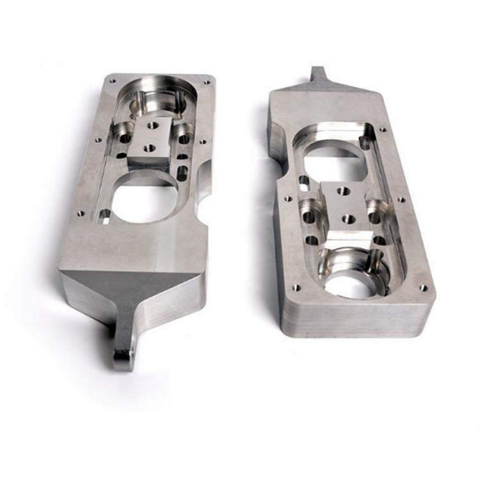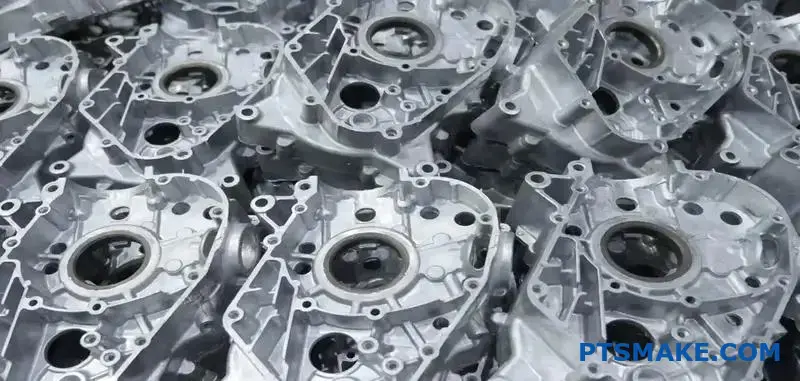Aluminum Casting Techniques: a Deep Dive Into Products and Approaches for Success
Aluminum casting methods play an important role in manufacturing. Various methods exist, each suited to different applications and requirements. Sand casting is favored for larger parts, while die casting is recognized for its precision in high-volume manufacturing. Investment casting provides thorough designs with remarkable coatings. Understanding these distinctions can greatly impact project results. Precision aluminum casting. Choosing the ideal method is not always straightforward, leading to vital considerations that should be checked out additionally.
Understanding Aluminum Casting: An Overview
Aluminum casting is a necessary manufacturing procedure employed across various sectors to develop elaborate elements with high precision. This method involves pouring liquified aluminum into a mold and mildew, permitting it to take the form and solidify of the preferred component. The versatility of aluminum, combined with its light-weight and corrosion-resistant buildings, makes it an ideal option for applications in auto, aerospace, and durable goods.
Various casting techniques exist, each suited to particular needs and task ranges. Factors such as mold and mildew products, cooling rates, and the complexity of the layout play a considerable role in establishing the most efficient strategy. Additionally, the residential properties of the aluminum alloy used can impact the end product's surface, sturdiness, and stamina coating.
Recognizing the principles of aluminum casting enables producers to enhance manufacturing procedures, decrease waste, and warranty top quality result, which is vital in today's affordable market.
Sand Casting: Applications and strategies
Among the different methods used in aluminum casting, sand casting sticks out because of its adaptability and cost-effectiveness. This technique includes creating a mold and mildew from a mix of sand and binder, which can be shaped to fit intricate designs. When the mold and mildew is ready, liquified aluminum is poured into it, allowing for elaborate features and information to be captured.
Sand casting is especially beneficial for creating large parts and low-volume manufacturing runs, making it ideal for vehicle elements, machinery parts, and creative sculptures. The method also fits a series of aluminum alloys, improving its versatility in various applications. Additionally, using sand as a mold and mildew product allows for very easy improvement and reuse, contributing to eco sustainable techniques. However, achieving high dimensional accuracy can present difficulties, demanding experienced workmanship and careful control of the casting procedure. Overall, sand casting stays an essential technique in aluminum foundries worldwide.
Die Casting: Precision and Efficiency
Die casting is a highly efficient approach of producing aluminum components with phenomenal dimensional precision and surface coating. This procedure entails forcing molten aluminum right into a specifically machined mold and mildew under high pressure, which enables for intricate styles and marginal material waste. The fast air conditioning of the alloy within the mold results in a solidified component that frequently requires little to no additional machining.
Die casting is especially advantageous for high-volume manufacturing runs, where uniformity and rate are critical. It supports the production of complicated geometries, making it appropriate for numerous applications, including vehicle, aerospace, and customer products.
Additionally, the process can fit different aluminum alloys, improving the mechanical properties of the ended up items. With its capability to create lightweight yet sturdy parts, die casting attracts attention as a favored method in modern production, delivering both precision and performance in aluminum casting.
Investment Casting: Detail and Intricacy
Financial investment casting, likewise recognized as lost-wax casting, is a accurate and functional method for creating intricate aluminum parts. This method is especially valued for its capacity to create elaborate geometries and great details that are often unattainable with other casting approaches. The process starts with a wax pattern, which is covered in a ceramic shell. Once the covering solidifies, the wax is dissolved, leaving a detailed mold for aluminum putting.
The advantages of investment casting consist of premium surface finish and dimensional accuracy, decreasing the need for substantial machining afterward. It is particularly beneficial for small to medium manufacturing runs where precision is crucial. This approach fits numerous aluminum alloys, boosting its applicability throughout sectors. Precision aluminum casting. Ultimately, investment casting sticks out for its ability to deliver both visual appeal and useful efficiency in aluminum elements, making it a recommended selection for designers and engineers looking for facility solutions

Choosing the Right Method for Your Project
How can one figure out one of the most appropriate aluminum casting technique anchor for a specific task? The choice process rests on several important aspects, consisting of the intricacy of the layout, the preferred surface coating, and manufacturing volume requirements. For complex designs, financial investment casting typically confirms helpful due to its capacity to catch great details. Conversely, sand casting may be favored for bigger, less complicated parts, providing cost-efficiency and adaptability in manufacturing.
Furthermore, considerations concerning tolerances and mechanical buildings of the final item are important. For high-performance parts, die casting may be the very best selection, as it provides exceptional dimensional precision and surface high quality. On top of that, recognizing the material residential or commercial properties and compatibility with the picked approach is very important for making certain the success of the project. Inevitably, a complete assessment of these elements will guide the decision-making procedure, bring about the most effective aluminum casting technique for the particular job available.
Regularly Asked Questions
What Is the Ecological Effect of Aluminum Casting Techniques?

How Can I Enhance the Surface Complete of Cast Aluminum?
To enhance the surface area finish of cast aluminum, one can use strategies such as sandblasting, polishing, and using coverings. Appropriate mold and mildew design and temperature level control likewise substantially enhance the final surface quality of the actors product.
What Safety and security Precautions Should Be Taken During Aluminum Casting?
During aluminum casting, vital safety preventative measures consist of using safety equipment, ensuring correct air flow, making use of fireproof products, keeping a safe distance from liquified steel, and sticking to equipment safety and security procedures to avoid mishaps and injuries.
How Do I Troubleshoot Typical Casting Defects?
To repair common casting problems, one should evaluate the mold and mildew for damage, analyze the alloy structure, check pouring temperature, change cooling rates, and guarantee proper airing Resources vent to reduce air entrapment and enhance casting quality.
What Are the Costs Connected With Different Aluminum Casting Techniques?
The prices associated with various aluminum casting techniques differ considerably, influenced by elements such as material expenditures, devices, labor, and production scale. Spending plan factors to consider are necessary for choosing the most ideal casting method for certain projects.
Sand casting is preferred for bigger parts, best site while die casting is understood for its precision in high-volume manufacturing. Among the different methods made use of in aluminum casting, sand casting stands out due to its adaptability and cost-effectiveness. Die casting is a very reliable approach of creating aluminum components with exceptional dimensional precision and surface area coating. Investment casting, additionally understood as lost-wax casting, is a accurate and versatile technique for creating complex aluminum parts. Exactly how can one identify the most suitable aluminum casting technique for a specific project?